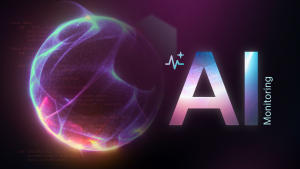As our recently released research illustrates, organizations that prioritize software excellence also report higher revenue growth and say they are ahead of their peers on brand perception, pace of innovation, employee engagement, and more. David Michael, director of consumer platform operations at Meredith, explains why observability is critical to delivering one of the organization’s most important programs.
New Relic: What are your organization’s top priorities around software development?
David Michael: We are in the middle of revamping our content-delivery platform. Meredith operates a number of consumer websites and, after we acquired Time Inc., we were left supporting a number of different content management systems and architectures. Because of this, there was no cohesive way to integrate all of the websites, tie pieces of content together, and offer recommendations—things that our customers really wanted.
To solve this, we started re-platforming into a frontend and backend infrastructure that would decouple the content from the presentation layer. This will give us the ability to iterate on this new platform quickly while keeping the current sites online and letting us migrate them to this new platform. It’s been a big change for Meredith but, when we’re all done with it, it’s going to be pretty amazing. It will allow us to implement changes across all of our sites simultaneously, so we don’t have to go in and change different types of content individually.
New Relic: What role does observability play in ensuring this program is a success?
Michael: Observability is particularly important to one aspect of the program. We are currently migrating our data from legacy content platforms onto a new platform, and we have a team that is focused on that migration. They have a pipeline to complete the migration, which involves synching content into this new environment daily, so it's as up to date as possible. They have great observability around the migration, spanning the whole length of the project. They can go back in time and see which pieces of content were failing, why, and track how much the migration process is improving. It’s been really interesting to see the improvements over time.
New Relic: Which observability tools are the team using?
Michael: We are trying to get New Relic integrated into all parts of the platform, particularly because New Relic has distributed tracing. We handle all these microservices that are dependent on one another, so, when a problem does arise, it can be difficult to pinpoint the cause of it. New Relic allows us to see how one issue impacts other aspects of the platform. For example, the product owners needed a high degree of observability into how long the migration would take, so they could plan when they should be onboarding different brands, or moving different sites over to the new platform.
To give the product owners that insight, developers have been using a combination of New Relic and some custom dashboards and tools that they've built. This has been very important because, sometimes, there is a disconnect between the metrics that product owners see on a project and what the developers are seeing. The dashboard gives the two groups a single source of truth.
"Search engines are testing for performance issues and raking sites based on their performance. So getting the right latency has been critical to ensuring users don't experience a delay. Observability [helps us] do this effectively."
New Relic: What are some of the challenges around this migration and how are you managing them?
Michael: Different search engines, such as Google and Bing, are testing for performance issues and ranking sites based on the quality of their performances. So, getting the right latency has been critical to ensuring the user doesn’t experience a delay.
Observability tools like New Relic have been really valuable in giving us the information that we need to do this effectively. For example, when we can see that our latency is approaching an unacceptable level, we can actually stop feature development and focus more on improving the reliability of that system, or on reducing latency, or on any other metric, as required. This agility is something we’re getting through our work with New Relic, especially around some of the services where we are doing releases.
We also want to understand what the user’s experience of the site is. There are all of these different third-party integrations that are happening within a user's browser, which have the potential to slow things down. New Relic integrates with these other partners and tells us what the impact is on our consumers.
New Relic: What are the key benefits of using observability software?
Michael: It's a combination of reducing the overall amount of downtime and improving the customer experience. We want our sites to be as readily available as possible, but we also want them to deliver the performance that we expect—especially because so much of our content is focused on getting people to our sites, and ensuring they stay on them and view the advertisements that are there.
It’s critical for us that our sites are available, and also that we have good response times, especially as mobile devices have gotten more popular.
New Relic: To what extent are your developers autonomous and empowered to make decisions by themselves?
Michael: We have a lot of development teams that are fully managing their own AWS accounts, and are able to go out and make changes completely independently. We wanted to give developers enough freedom in order to build those systems. And we trust them to go in and make the right decisions there.
We do have a few guardrails that are automated, and systems to make sure that people are following best practices and that they send notifications if they're not. We want to be there to support groups that may not have that much experience, to help them become independent. We are continuing to evolve that process.
Curious about whether you’re a software development leader or laggard? Explore our research results and take our assessment to find out.
本ブログに掲載されている見解は著者に所属するものであり、必ずしも New Relic 株式会社の公式見解であるわけではありません。また、本ブログには、外部サイトにアクセスするリンクが含まれる場合があります。それらリンク先の内容について、New Relic がいかなる保証も提供することはありません。



